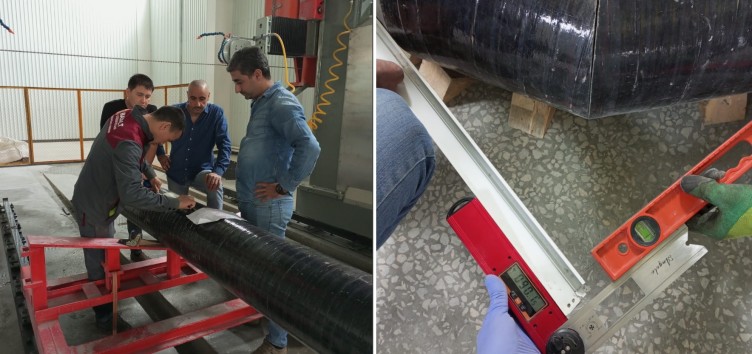Glass Reinforced Plastic (GRP) pipes are widely recognized for their durability, corrosion resistance, and versatility. However, when it comes to fitting GRP pipes, the frequent practice of manual cutting poses inherent dangers in the fitting department that need to be addressed. In this article, I would like to shed light on the risks associated with the manual cutting of GRP pipes for fittings and emphasize the importance of adopting safer alternatives to ensure the well-being of your workers and the longevity of GRP installations.
Health and Safety Hazards
Manual cutting of GRP pipes exposes your workers to a range of health and safety hazards. The cutting process generates fine particles, known as airborne dust or particulate matter, which can pose serious risks when inhaled. These particles may contain glass fibers and harmful resins, potentially leading to respiratory issues and skin irritations. Moreover, the use of manual tools such as saws or grinders increases the risk of accidents, including cuts, abrasions, and musculoskeletal injuries. Protecting the health and safety of your workers is paramount and necessitates the exploration of safer alternatives to manual cutting.
Compromised Structural Integrity
Frequent manual cutting of GRP pipes for fittings can compromise the structural integrity of the pipes themselves. Improper cutting techniques or inconsistent measurements may result in uneven or imprecise cuts, leading to poor joint connections. These compromised connections can result in leaks, reduced system efficiency, and potential failure over time. Considering the long-term performance and reliability of GRP installations, it is essential to minimize the risks associated with manual cutting to maintain the integrity of the pipe network.
Time and Cost Inefficiencies
Manual cutting of GRP pipes for fittings can also lead to time and cost inefficiencies. The process requires skilled labor and consumes valuable time, especially when dealing with large-scale projects. In addition, the need for accurate measurements, careful handling, and the potential for rework increase the overall project duration. Moreover, the costs associated with manual cutting, including labor, specialized tools, and potential rework, can significantly impact the project budget. Exploring alternative methods for your fitting department that streamline the fitting process can save time and resources.
“Simple, highly effective and reliable.”
Are you wondering how to get the below-listed benefits?
To read more about how to increase the efficiency of fitting manufacturing click on the button below:
“If you could completely change the cutting operation, making it safe, hazard-free and at the same time rapid, precise and repetitive, would you not do it?”
You can make your cutting operation for fittings safe, hazard-free, rapid, and precise. Not only can you remove from your fitting production the task of manual cutting of GRP, as well as dust generation and related health hazards, but you can also avoid the complicated marking of pipes, expensive cutting blades, and uneven cutting.
“Simple, highly effective and reliable.”
Are you wondering how to get the below-listed benefits?
To read more about how to increase the efficiency of fitting manufacturing click on the button below:
[/et_pb_text][/et_pb_column][/et_pb_row][/et_pb_section]“To mitigate the dangers associated with manual cutting, we embrace safer alternatives, driven by computer-controlled systems, offers precise and consistent cutting while maintaining the structural integrity of GRP pipes.”
Embracing these alternatives enhances safety, improves installation efficiency, and safeguards the performance of GRP pipe networks.
“If you could completely change the cutting operation, making it safe, hazard-free and at the same time rapid, precise and repetitive, would you not do it?”
You can make your cutting operation for fittings safe, hazard-free, rapid, and precise. Not only can you remove from your fitting production the task of manual cutting of GRP, as well as dust generation and related health hazards, but you can also avoid the complicated marking of pipes, expensive cutting blades, and uneven cutting.
“Simple, highly effective and reliable.”
Are you wondering how to get the below-listed benefits?

